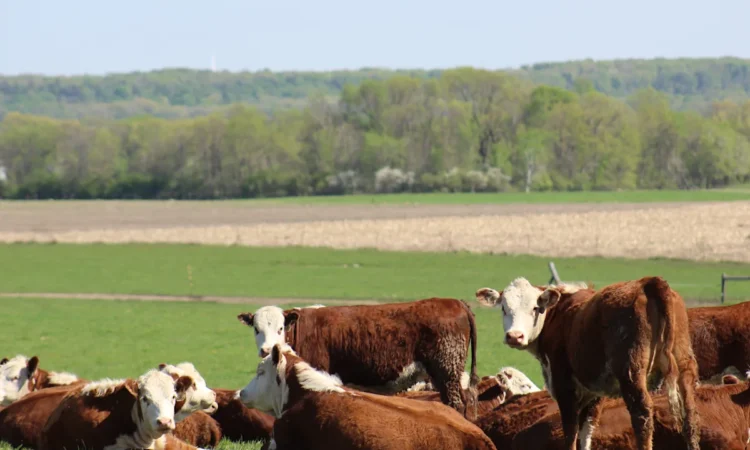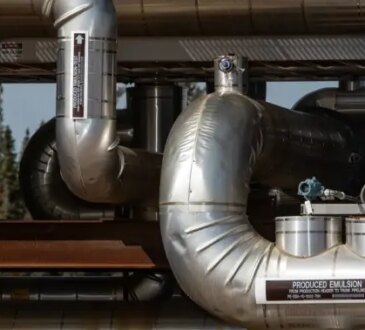
As Republicans and President Donald Trump continue beefing over the price of beef, the president recently decided to quadruple the number of imported cattle cuts from Argentina in an effort to lower prices.
This week, the president said U.S. cattle ranchers benefit from tariffs he imposed on imports, but prices must go down to encourage Americans to purchase their products, according to Reuters.
Trump’s suggestion did not go over well with U.S. ranchers.
“If President Trump is truly an ally of America’s cattle producers, we call on him to abandon this effort to manipulate markets,” said the National Cattlemen’s Beef Association’s CEO Colin Woodall in a Wednesday statement.
Woodall noted that over the past five years, Argentina has shipped beef valued at more than $800 million to the United States while purchasing only $7 million of American beef. He also said the country has a long history of foot-and-mouth disease and the Department of Agriculture has not completed the necessary steps to ensure Argentina can guarantee the safety of the products being shipped to the United States.
Without completing the necessary steps, there is a risk of further endangering the country’s cattle herd, he said.
The rate quota on Argentine beef will be raised to 80,000 metric tons, Reuters reported, allowing Argentina to ship more cuts to the United States at a lower rate of duty. This year, beef prices have steadily increased due to consumer demand and supply constraints.
Here’s everything to know about the ongoing beef situation in the United States.
Why did beef prices go up?
According to the USDA’s Livestock, Dairy and Poultry Outlook report from September, forecasts for beef production are adjusted slightly downward for 2025 but fractionally higher for 2026.
In August and September, cattle prices set record highs, the agency said, prompting price projections to be raised in the second half of 2025 and carried forward into 2026. The August price for slaughter steers set a new monthly average record at $243.14 per hundredweight, $6 higher than July and almost $54 above August last year. Weekly cattle and wholesale prices softened from daily highs set in late August but remained historically elevated.
Beginning in late July and extending into August, weekly cattle slaughter slowed seasonally to the lowest levels since 2015. August saw a 10 percent decline in cattle slaughter, the largest year-over-year decline for any month in 2025, according to the agency’s report.
In September, the price of beef and veal was up 14.7% compared to the same point last year, according to the Labor Department.
Tracking cattle prices helps economists understand what ranchers are paid for the animals they raise. Economists track slaughter figures to help track middle-men in the meat market. Most cattle are sold to feed lots, who finish raising the animals to weight, before they go to slaughterhouses and meatpackers. Those companies package the products that go to wholesalers and ultimately end up in groceries and restaurants.
Agricultural economist David P. Anderson, a professor at Texas A&M University, told USA TODAY that today’s cattle prices are the result of numerous events that have occurred over recent years. In 2014, the country had record high beef prices, a signal to ranchers to produce more.
The United States then saw an uptick in cattle and beef supplies, bringing prices down. But then, ranchers were hit with a number of serious droughts in major producing areas, forcing ranchers to reduce their cattle herds, which led to less beef and higher prices. Meanwhile, consumer demand for beef has grown as higher quality beefs have become more popular, Anderson said.
Ranchers have little control over the prices consumers pay for beef, which are largely set by meatpackers. About 80% of all beef products in the United States come from four meatpackers — Tyson Foods, JBS, Cargill, and National Beef. The international companies buy from both domestic and foreign ranchers.
Earlier this month, Tyson Foods agreed to pay $85 million to settle a lawsuit by consumers who accused the company of conspiring with rivals to inflate pork prices by limiting pork supplies in the U.S. market, which is valued at $20 billion, Reuters reported. Plaintiffs in the lawsuit claimed an alleged conspiracy went on from 2009 to 2018 with the intention of increasing the defendants’ profits and retail prices.
In February, the Brazilian company JBS agreed to pay $83.5 million to settle antitrust claims that it conspired with other meat-packing companies to curb supply in the U.S. beef market to inflate prices, according to Reuters.
In federal courts in Minnesota and Chicago, plaintiffs are accusing meat packers of similar allegations with beef, chicken and turkey supplies.
What has Trump said on beef prices?
“Prices are way down in our country. The only cost that’s really up is beef,” said Trump in the Oval Office on Oct. 22, per Reuters. “We’re going to do something very quickly and easily on beef to get it down. The ranchers understand that.”
In a Truth Social post, the president added: “The Cattle Ranchers, who I love, don’t understand that the only reason they are doing so well, for the first time in decades, is because I put Tariffs on cattle coming into the United States, including a 50% Tariff on Brazil.
“They also have to get their prices down, because the consumer is a very big factor in my thinking, also!”
This week, the Agriculture Department announced the “Plan to Fortify the American Beef Industry: Strengthening Ranches, Rebuilding Capacity and Lowering Costs for Consumers.”
The plan aims to lower long-term costs, increase marketing options, and ensure consumers have “clear, truthful information about American beef.”
Republican lawmakers have raised concerns over the president’s plans. Tuesday, eight GOP lawmakers sent a letter to the president asking for additional information on his plans to import beef.
“(We) urge your administration to ensure that any future decisions are made with full transparency, sound science, and a firm commitment to the U.S. cattle industry,” the letter led by Rep. Julie Fedorchak, R-North Dakota, said.
More: Republicans are beefing with Trump over beef
Argentina beef
When it comes to Argentine beef, Anderson said he doesn’t expect to see a material effect on beef prices from the president’s new policy. The United States brings in 2.1% of its beef imports from Argentina.
“Most of what we import from them is typically very lean beef, trimmings that we make ground beef out of,” said Anderson. “Presumably a lot of that will go more into restaurant food-service hamburger. It will be really hard to find much of a price effect.”
Beef exports in July totaled 211 million pounds, 19% lower than a year ago, according to the USDA report. Monthly exports to the top six markets were lower year over year, except for South Korea, which was up 15 percent year over year.
Exports to China, Mexico and Taiwan were also low. Chinese exports were down 94%, while exports to Taiwan were down nearly 26% and exports to Mexico were 17% lower than in July 2024.
Meanwhile, beef imports in June totaled 457 million pounds, a roughly 13% increase year over year. The country’s highest beef import partners are in descending order: Brazil, Australia, Canada, New Zealand and Mexico.
The USDA reported that an additional tariff on beef imports from Brazil, which took effect in August, is expected to continue making those imports less competitive in the U.S. market.
Michelle Del Rey is a trending news reporter at USA TODAY. Reach her at mdelrey@usatoday.com.
This article originally appeared on USA TODAY: Why are beef prices going up? What to know as politicians beef over cattle production



